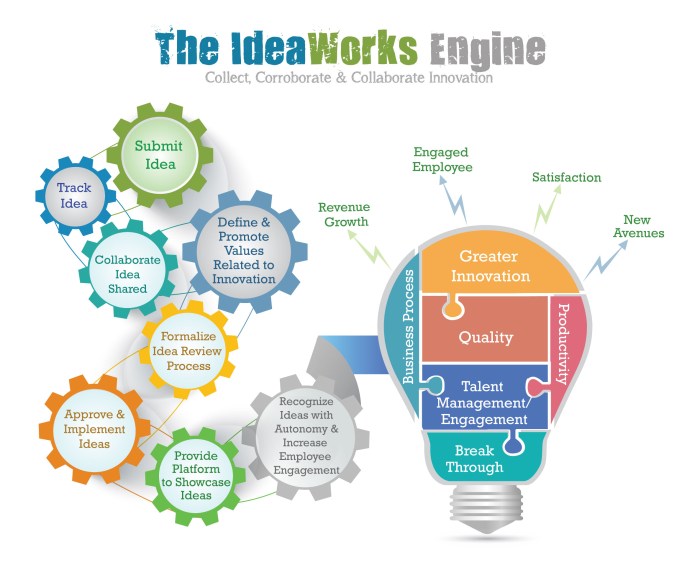
Innovation is Anything But Business as Usual
When we speak of innovation, we speak of generation, development and implementation of ideas. These are ideas that produce fresh strategies, products, services or processes which uplift economic or social value. Innovation is the creation and application of better solutions that meet new requirements, evolutionary needs, or existing market requisites. Innovation also connotes originality and radical and incremental change of existing products, processes and services. It can be a solution that makes an uncommon breakthrough for the market or society.
One of the first people to define innovation was Schumpeter in 1947 when he stated that innovations are a new way of doing things and that they change the values of the existing system. Innovation became a systematic evolution of a concept that was never experienced before.
It is critical for innovation that it has:
- An innovation strategy that is developed over a period of time
- An innovation process that is systematically integrated within the business
- Comprehensible goals to incorporate strategy within the company culture over a period of time along with merging market dynamics and customer needs
- A resultant change that should be sustainable
- A value derivative that impacts market and business growth incrementally
Today, technological sprints are appearing at dizzying speed. Now more than ever, companies have decided to align themselves with innovation as a mandatory component of their business strategy. According to Gartner, top strategic innovation trends for 2014 include The Rise of the Smart Machines, Personal Cloud, Hybrid IT and The Internet of Everything, all of which have a dynamic scope of revolutionizing employee work function.
Creating a better future requires creativity in the present
An innovation succeeds because it solves a large enough problem for the user and a business. Continual improvement is imperative for any business as it creates differentiators from competition in product manufacturing and services delivery. For SMBs to survive the cutting edge of competition, they need to keep upgrading USPs as an integral part of their business strategy. It is important for companies to be better equipped with hygienic data management systems which are scalable to market innovation.The companies that are more likely to be received better by their market and partners are those with the speed of decision making and an innovative mindset. Practicing innovation also helps set an example for those who work with a business, like vendors and employees.
Ideas come from everything
Innovation has become the DNA of many successful companies. Innovation led companies adopt these four practices, by and large:
Pegging the next S Curve: Saturation point can reach fast enough for a growth company. It’s important to be proactive as the best products, markets, and business models go through a predictable cycle of growth and maturity. An innovation window is created when the first growth curve hits an inflection point. The best companies realize this and hence make innovation a continuous process. Steve Jobs applied this practice with Apple products. He evolved his product design and value as competition against Sony rather than Microsoft, and created breakthrough products such as iPod, iPhone and iPad [1]
Think Laterally: Innovation involves creating new options and this is where designers excel. In 2003, the reign of erstwhile innovation of compact disc ended when Apple moved into the digital music space as a provider and distributor of content. Apple created iTunes as an online service allowing users to download legal, high quality songs for a very reasonable price. This was an example of searching for uncontested market space and Value Innovation, which are key concepts of The Blue Ocean Strategy which reaches beyond existent demand and recreates market boundaries.
Go Lean: Lean development means creating a successful offer before running out of resources. In the new lexicon of lean, customer development should happen in parallel with product development. Lean manufacturing is based on optimizing flow, increasing efficiency, decreasing waste, and using empirical methods to decide what matters, rather than uncritically accepting pre-existing ideas. Toyota was a leader in implementing lean practices in the 80s. [2]
Toyota brought focus upon collecting all employees associated with a given project; designers, suppliers, even sales and marketing people, into a single workspace. They delivered the final product as close as possible to the point of sale. This is known as the “just in time” concept. The technique also places heavy emphasis on keeping the inventories low [3]
Create a Culture of Innovation: CEOs of ingeniously successful enterprises have set a firm foot forward and ensured management provides air cover for innovation risks. Howard Schultz got in every Starbucks store manager from across the world to help redesign its café experience. Google encourages employees to spend 20% of their time on new ideas. Chanda Kochhar, MD & CEO, ICICI Bank Ltd. believes innovation in any company has to work both ways, top-down as well as bottom-up. Anand Mahindra, Chairman, Mahindra Group has brought in a 5S framework in his organization’s mindset comprising space, self indulgent creativity, simplicity, sans and sustained experimenting.
But is bringing innovation within a corporation really that easy?
Enterprises today know that innovation is employee driven. Employees are the best source of ideas as they do the actual work, engage with the real users, and adhere to real time processes. In spite of all care taken, things can go wrong at points where,
- Initiatives are launched with great excitement and expertise, but the market and users react on a tepid note.
- Ideas come forth with such drastic buzz that companies invest in innovation without testing customer behaviour and response
- Intrapreneurial gusto can be lost between approvals and budget go-aheads in mammoth establishments
- Employees may not readily connect their functional goals with the organization’s business goal. In this scenario, employees may feel uninspired to come up with out-of-the-box ideas as their purview of work experience is performing their role and the buck ends there.
- There is no formal inventory of ideas and verbally discussed ideas may be purloined.
Aligning with innovation
Considering these challenges, a framework is essential to leverage ideas and motivate employees simultaneously. Recognizing innovation also has to be a collaborative effort. In this regard,
- Innovation should be included as a part of the organization’s DNA and emerge as a new culture
- Managers should create strategies to ensure that the product or individual is not the sole focus of innovation, but also market and customer needs, which fluctuate rapidly.
- Employee involvement should be foremost as employees birth ideas that are intrinsic to their respective business and can harness the economic potential of their product market, provided time and space is given, and the course is well monitored
In other words, breakthrough potential within any organization needs to be fuelled, guided and aligned with customer need. It must be ensured that the product or individual is not the sole focus of innovation. These new ideas require acceptance, iterations, directional changes, course corrections and support from business excellence groups within the enterprise.
Innovation Is Not the Result of Chance, It’s the Result of Action
PeopleWorks believes that ideas can be sown and germinated within the capacity of any business, and workforce can be effective contributors to innovation. This dispels the expense of hiring external consultancy, and nurtures employees to take onus of innovation.
PeopleWorks is aware of demanding business needs and hence we collaborate with our customers’ uninterrupted growth. For this reason, amongst a host of Human Capital Management solutions, we have introduced IdeaWorks. IdeaWorks is a unique tool that your organization can employ to encourage and facilitate ideas and innovation within your flagship.
IdeaWorks is distinctive in its advantage as it benefits both the organization and the employees together, by automating the process of idea submission, approval/rejection and implementation. IdeaWorks can assess ideas and provide a predictive indicator of the impact on your ROI before the project even begins. The IdeaWorks engine drives your business growth in constructive ways benefiting both the organization and employee.
IdeaWorks encourages employees to be excited about their ideas, and follows a flow from logging through to implementation, and beyond. IdeaWorks is a platform from PeopleWorks that collects, corroborates and collaborates new thinking, alongside lending credibility and recognition to the employees who suggest better processes or planning. IdeaWorks helps management recognize talent with autonomy and fosters employee engagement and hence greater innovation. PeopleWorks supports enterprises with the finest employee data management solution. To harness the best from your workforce, bring in compliance, streamline workflows, and invest within the cultural paradigm of your company, and not externally, click here for a free demo.
[1] https://www.slideshare.net/jpvajda/lean-software-development-principles [2] https://www.foxnews.com/us/2011/04/29/japans-lean-manufacturing-takes-root/

